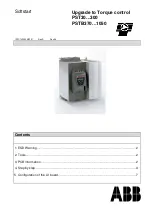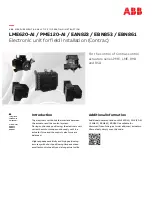
Module Operation
1234
SPNU563A – March 2018
Copyright © 2018, Texas Instruments Incorporated
FlexRay Module
26.2.6.6 WAKEUP State
The following description is intended to help configuring wakeup for the FlexRay module. A detailed
description of the wakeup procedure can be found in the FlexRay protocol specification v2.1 Rev. A.
The communication controller enters this state:
•
When exiting from READY state by writing SUCC1.CMD(3-0) = 0011 (WAKEUP command).
The communication controller exits from this state to READY state:
•
After complete non-aborted transmission of wakeup pattern
•
After WUP reception
•
After detecting a WUP collision
•
After reception of a frame header
•
By writing SUCC1.CMD(3-0) = 0010 (READY command)
The communication controller exits from this state to HALT state:
•
By writing SUCC1.CMD(3-0) = 0111 (FREEZE command)
The cluster wakeup must precede the communication startup in order to ensure that all nodes in a cluster
are awake. The minimum requirement for a cluster wakeup is that all bus drivers are supplied with power.
A bus driver has the ability to wake up the other components of its node when it receives a wakeup
pattern on its channel. At least one node in the cluster needs an external wakeup source.
The host completely controls the wakeup procedure. It is informed about the state of the cluster by the bus
driver and the communication controller and configures bus guardian (if available) and communication
controller to perform the cluster wakeup. The communication controller provides to the host the ability to
transmit a special wakeup pattern on each of its available channels separately. The communication
controller needs to recognize the wakeup pattern only during wakeup and startup phase.
Wakeup may be performed on only one channel at a time. The host has to configure the wakeup channel
while the communication controller is in CONFIG state by writing bit WUCS in the SUC configuration
register 1. The communication controller ensures that ongoing communication on this channel is not
disturbed. The communication controller cannot guarantee that all nodes connected to the configured
channel awake upon the transmission of the wakeup pattern, since these nodes cannot give feedback
until the startup phase. The wakeup procedure enables single-channel devices in a two-channel system to
trigger the wakeup, by only transmitting the wakeup pattern on the single channel to which they are
connected. Any coldstart node that deems a system startup necessary will then wake the remaining
channel before initiating communication startup.
The wakeup procedure tolerates any number of nodes simultaneously trying to wakeup a single channel
and resolves this situation such that only one node transmits the pattern. Additionally the wakeup pattern
is collision resilient, so even in the presence of a fault causing two nodes to simultaneously transmit a
wakeup pattern, the resulting collided signal can still wake the other nodes.
After wakeup the communication controller returns to READY state and signals the change of the wakeup
status to the host by setting bit SIR.WST in the status interrupt register. The wakeup status vector
CCSV.WSV(2-0) can be read from the communication controller status vector register. If a valid wakeup
pattern was received also either bit SIR.WUPA or bit SIR.WUPB in the status interrupt register is set.
















































